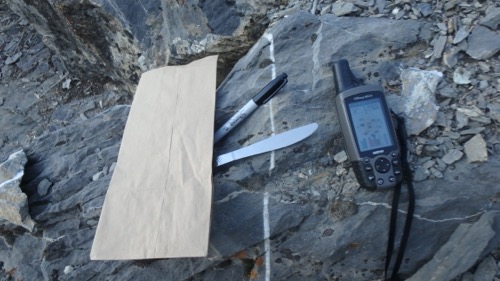I went hiking today with my friend Jarick Poulson. We had a nice hike in Grove Creek Canyon in Pleasant Grove, Utah. It felt good to get outside and get a little bit of exercise after eating too much yesterday.
 My friend Jarick and I hiking in Grove Creek Canyon, Utah.
My friend Jarick and I hiking in Grove Creek Canyon, Utah.
Equipment
I took along some tardigrade collecting supplies so I could share how I collect tardigrades. One of the easiest places to find a tardigrade is in a clump of moss or lichen. They are easy to collect and you don't need any fancy equipment. I use paper lunch sacks and a butter knife to collect my samples.
 I use a paper lunch bag, butter knife, marker and a GPS unit when collecting tardigrades.
I use a paper lunch bag, butter knife, marker and a GPS unit when collecting tardigrades.
Collection
When you locate a sample of moss or lichen you want to collect, simply pull or scrape the sample off into a bag. I like to collect a variety of mosses and lichens especially if I am in a location where they are abundant. Not every sample will have tardigrades in it so it is best to collect several if you can.
 Josh Heward collecting a moss sample.
Josh Heward collecting a moss sample.
Labeling
I always try to label the bag with the collector's name or initials, the date, the type of sample, and the surface it was collected from. I have a GPS unit, so I record the latitude and longitude of each sample I collect. If you don't have access to a GPS and you are out of cell phone range, you could look up coordinates on Google Earth when you return home. It is nice to record the location so you can go back to it if you find a rare species or or a sample with lots of tardigrades.
 Collected samples are labeled with your initials, date, sample type, and GPS coordinates.
Collected samples are labeled with your initials, date, sample type, and GPS coordinates.
Samples can be stored in a dry location for months or even years in the paper bag until you are ready to look for the tardigrades with a microscope. We will be collecting tardigrades from soil samples in Antarctica and I will describe that process next month when I am there.


Comments